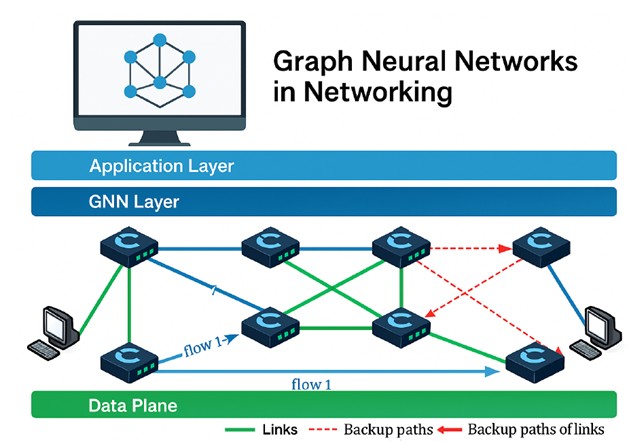This research introduces the Dynamic Graph Neural Network for Real-Time Failure Recovery (DGNN-RTFR) framework, a novel approach to network failure recovery specifically designed for Software-Defined Networking (SDN) environments supporting Industrial Internet of Things (IIoT) applications. Traditional failure recovery mechanisms suffer from slow convergence times, limited multi-failure handling capabilities, and inadequate optimization for industrial requirements, making them unsuitable for mission-critical industrial environments.

Objectives
- Develop a unified spatio-temporal graph learning model that simultaneously captures network topology and temporal evolution.
- Design and implement an advanced multi-failure recovery algorithm capable of handling multiple concurrent failures.
- Create a robust prediction mechanism that maintain accuracy under noisy and incomplete telemetry conditions.
- Formulate IIoT-specific optimization criteria that ensure compliance with industrial constraints.
- Deliver a computationally efficient solution suitable for deployment in fog computing environments with strict processing constraints.